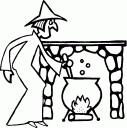For me, the most efficient method of learning is through teaching. The proof is in the pudding, if you will. If I really know my material, essentially I should be able to break it down and convey in a way that the general population will understand easily.
Many of you may know more about beer than I do, therefor making this blog redundant and rather boring. For this, I apologize. For those of you who are, like me, still on the voyage to beer connoisseurship — hopefully, I will be a good teacher. And so let us learn, shall we?
What is the recipe for beer?
The core foundation of every beer consists of four key ingredients: water, malt, hops, and yeast. Obviously, the variations of beer are a result in different variations of all the key ingredients. Although each is an equally important factor in the end result, the major variation in beer is a result of the type of yeast used in fermentation.
About 90% of beer is water. Traditionally, the mineral content in water greatly influenced the final taste of beer and was specific to the region in which it originated. With today’s ever expanding technologies, almost any water can be chemically adjusted to create any particular style of beer desired.
Many of you may be thinking — “Ok, I knew that beer is made of water, malt, hops, and yeast. What about barley?” This brings us to the malt. “Malt” is short for malted barley. Barley is a basic cereal grain — similar to oats, wheat, or rice — but, unlike aforementioned grains, it is not particularly good for milling into flour and making baked goods with. Beer has been made of many grains, yet none come close to the quality of beer made from barley.
There are three major types of barley. Each is differentiated by the number of seeds at the top of the stalk. Barley seeds grow in rows of two, four, and six along the central stem. Traditionally, Europeans prefer the two-row barley, while Americans prefer the six-row barley.
There are three steps in the malting process: steeping, germination, and kilning.
To make malt from raw barely, the grain is first soaked in water until it begins germinating — or sprouting. During the germination process, enzymes begin breaking down the starches in the grain into sugar. The grain must be closely monitored at this point. Germination is done on floors, in boxes, or in drums. At the desired stage of germination, the grain is then heated in a kiln, or large oven, which stops the germination and growth process.
The temperature in the kiln determines the color of the malt and the amount of enzymes which survive for use in the mashing process. most often malts are classified as base malts, specialty malts (light or dark), caramelized/crystal malts, roasted malts, unmalted barley (roasted barley and green malt), and other malted grains (wheat and rye). More on malts at another time.
This bring us to hops. Since I’ve already discussed hops in length, we will pass over it for now.
Last but not least, we have the yeast. There are literally hundreds of varieties and strains of yeast. They are biologically classified as fungi and are responsible for converting sugars into alcohol and other byproducts. (We will discuss the alcohol ratio another time).
Traditionally, it was thought that two different species of yeast were used in beer fermentation – ale yeast ale yeast (the “top-fermenting” type, Saccharomyces cerevisiae) and lager yeast (the “bottom-fermenting” type, Saccharomyces uvarum). Today, as a result of recent reclassification, both ale and lager yeast strains are considered to be members of S. cerevisiae species.
What are the differences between these two types of yeast? Top-fermenting yeasts float to the top of the beer and are fermented at higher temperatures over shorter periods of time. They typically produce ale-type beers of higher alcohol concentrations that are fruitier and sweeter. Bottom-fermenting yeasts tend to settle out to the bottom of the fermenter as fermentation nears completion. Typically producing lager-type beers, bottom-fermenting yeasts produce fewer of the esters that cause the fruity taste in ale, leaving a crisper taste. They ferment best at lower temperatures over a longer period of time.
So there you have it — the ingredients to beer in a nut shell.





















No Comments
There are currently no comments on The Recipe For Beer. Perhaps you would like to add one of your own?